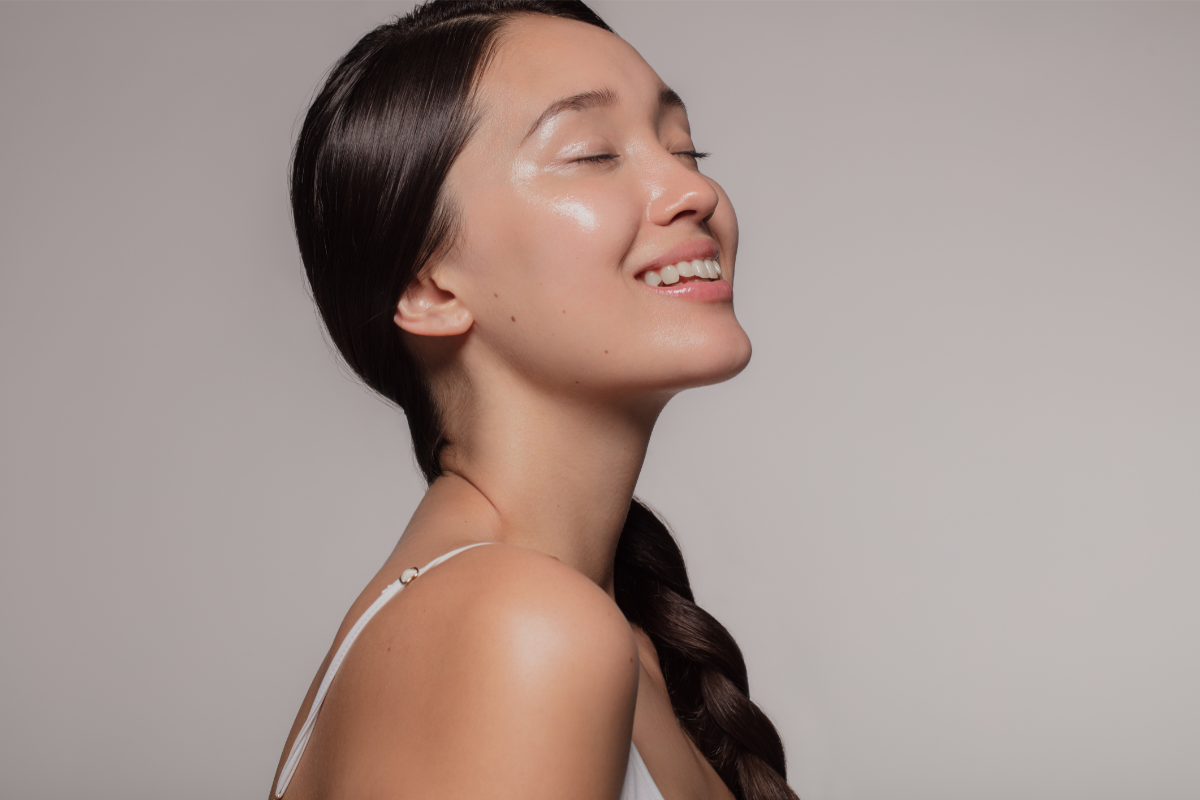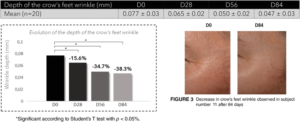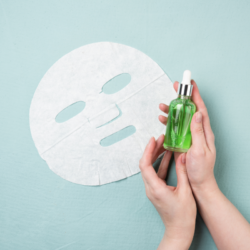The secrets of beauty and youth have been sought after throughout the ages. From rose water to mesotherapy, mankind has invented countless methods to keep the skin healthy and slow down the ageing process. In this article, we’re going to focus on an innovative and scientifically proven approach to improving skin health: red light therapy. But before we explore the benefits of red light for the skin, let’s take a step back in history.
Why is photobiomodulation good for the skin?
Red light has been used for years in medicine for a variety of therapeutic applications, including wound healingreducing inflammation and stimulating cell regeneration. But why red light? It’s a question of wavelengths. Red light lies between 630 and 700 nanometres on the electromagnetic spectrum, an ideal range for penetrate deep into the skin and stimulate the body’s own healing processes.
The history of red light therapy
Also known as LED phototherapy, it was extensively studied by NASA in the 1990s. The organisation was looking for ways to improve plant growth in space and to help astronauts heal after space missions. The researchers discovered that red LEDs (light-emitting diodes) were not only effective for photosynthesis, but also for stimulating energy in human human cells.
Understanding red light therapy
Red light therapy is a fascinating science that promises many benefits for the skin. In this section, we’ll help you understand the basics of this technique and how it works at a cellular level to promote skin health and beauty.
What is red light therapy?
Red light therapy, also known as photobiomodulation, uses wavelengths of red and near-infrared light to treat a variety of skin problems. This non-invasive therapy is renowned for its beneficial effects on skin rejuvenation,acne, wrinkles and scars.
How does red light therapy work?
Red light therapy works by stimulating the production of collagen andelastin, two proteins essential for keeping skin firm and elastic. In addition, red light can also help to reduce inflammation and improve blood circulation, helping the skin to heal and regenerate.
The difference between red light and blue light
It’s important to note that not all light is created equal when it comes to skin care. Red light and blue light, for example, have very different effects. While red light is mainly used for its anti-ageing and restorative action, blue light is often used to treat acne thanks to its antibacterial properties.
The specific benefits of photobiomodulation for the skin
Red light is renowned for its positive effects on skin health. Whether it’s to firm the dermis, reduce the signs of ageing or soothe inflammation, this technology has proven its effectiveness. In this section, we will highlight the specific benefits of red light for the skin.
Red light for wrinkles and ageing
Wrinkles and fine lines are two of the most common signs of skin ageing. Fortunately, red light can help reduce these signs. By stimulating collagen production, red light can help fill in wrinkles, giving skin a smoother, younger appearance.
The red light anti-ageing revolution: Recent research and its implications
Red light photobiomodulation is an innovative approach to combating the signs of skin ageing, as highlighted by the recent study“Reverse skin ageing signs by red light photobiomodulation“. This method uses red LEDs to stimulate cell regeneration and energy production at mitochondrial level. The study, carried out on a group of women, showed a significant improvement in skin elasticity and texture, attesting to the effectiveness of this technique. The results suggest that red light can be a powerful tool for reversing the visible signs of ageing, offering a non-invasive and effective skincare solution.
How can acne be calmed and blemishes reduced?
Acne can be a frustrating condition to manage, but photobiomodulation can help combat it. Red light has anti-inflammatory properties that can reduce the swelling and redness associated with acne. What’s more, by stimulating blood circulation, red light can help eliminate acne-causing bacteria from the skin.
How can scars and stretch marks be reduced?
Red light therapy can also help to improve the appearance of scars and stretch marks. Red light stimulates the body’s natural repair process by increasing the production of collagen and elastin, which can help to reduce the appearance of scars and stretch marks.
How to treat eczema and psoriasis with LED light
Studies have shown that red light therapy can help treat certain chronic skin conditions such aseczema and psoriasis. Red light helps to reduce inflammation and stimulate the healing process, which can help to relieve the symptoms of these conditions.
Using photobiomodulation therapy
Red light therapy, an innovative technique with multiple benefits for the skin, is being increasingly adopted. In this section, we’ll look at how to use it, the precautions to take and tips for maximising its beneficial effects.
How is light therapy used?
Red light therapy can be carried out in a dermatology practice, but there are also red light therapy devices available for use at home. These devices emit specific wavelengths of red light and are generally used for 10 to 20 minutes per session.
The limitations of photobiomodulation therapy
Although red light therapy is generally safe, there are certain situations where it may not be recommended. For example, people with very sensitive skin or those taking photosensitising medication should consult a healthcare professional before trying red light therapy.
Potential side effects of red light therapy
Side effects of red light therapy are generally mild and temporary. They may include a slight reddening of the skin or a sensation of heat in the treated area. However, these effects generally disappear shortly after treatment.
Photobiomodulation and melasma
Melasma is a skin condition that causes brown or grey-brown spots on the face. It is often triggered by hormonal changes. Such as those that occur during pregnancy or with the use of oral contraceptives. Although it can be difficult to treat, recent research suggests that red light therapy may help.
Photobiomodulation therapy for the treatment of melasma
A 2017 study published in the Journal of Cosmetic Dermatology examined the effectiveness of red light therapy for the treatment of melasma. Researchers found that participants who received red light therapy showed significant improvement in their melasma compared to those who received placebo treatment.
In fact, it can help treat melasma by reducing inflammation and stimulating collagen production, which can help rejuvenate the skin and fade the appearance of dark spots.
However, while these results are promising, further research is needed to confirm its effectiveness in the treatment of melasma. As always, it is advisable to consult a dermatologist or other healthcare professional before trying any new treatments.
Stimulation of collagen production
Collagen is an essential protein that helps keep skin firm and elastic. As we age, our collagen production decreases. This can lead to wrinkles and sagging skin. Fortunately, research has shown that this therapy can help stimulate collagen production.
How light therapy stimulates collagen production
LED light therapy works by penetrating deep into the skin. In fact, it stimulates the mitochondria, the “energy powerhouses” of the cells. This encourages the cells to produce moreATP (adenosine triphosphate), the energy that powers many cellular functions, including collagen production.
In fact, by increasing collagen production, this therapy can help reduce the appearance of wrinkles, improve skin elasticity and give skin a younger, more radiant appearance.
What does science have to say?
Several studies have demonstrated the effectiveness of this therapy in stimulating collagen production. For example, a 2014 study published in the journal Photomedicine and Laser Surgery found that red light therapy led to a significant increase in collagen production in participants.
It is important to note that although red light therapy can stimulate collagen production, it cannot replace good nutrition and proper skin care. For best results, it is recommended to combine red light therapy with a diet rich in nutrients that support collagen production, such as vitamin C and amino acids.
Source :
- Lee, M. H., Lee, G. A., Song, J. Y., Jung, S. E., Shin, J. Y., Lee, J. H., Kim, Y. H., & Kim, D. H. (2017). Evaluation of phototherapy using Light-emitting diodes (LEDs) alone and in combination with light-activated compound of LED-ALA in Korean melasma patients: a prospective, randomized, open-label, clinical trial. Journal of Cosmetic Dermatology, 16(4), 523-529.
- Avci P, Gupta A, Sadasivam M, Vecchio D, Pam Z, Pam N, Hamblin MR. (2013). Low-level laser (light) therapy (LLLT) in skin: stimulating, healing, restoring. Seminars in Cutaneous Medicine and Surgery, 32(1), 41-52.
- Barolet D, Roberge CJ, Auger FA, Boucher A, Germain L. (2009). Regulation of skin collagen metabolism in vitro using a pulsed 660 nm LED light source: clinical correlation with a single-blinded study. Journal of Investigative Dermatology, 129(12), 2751-2759.
- LEDs in dermatology: A systematic review of randomized controlled trials
- Red light therapy: Effectiveness, uses, and safety
- https://onlinelibrary.wiley.com/doi/full/10.1111/srt.13391
@soin.et.nature 🌟Découvrez le pouvoir du Collagène Marin 10g + Vitamine C de Nat&Form, disponible chez Soin-et-Nature! 🌊🍊 🔬 La science est formelle : le collagène est la clé pour une peau éclatante et des articulations résistantes.💪Mais avec l’âge, sa production naturelle diminue… Heureusement, Nat&Form est là pour vous aider! 🎯👵👴 🌿Notre collagène marin, associé à la vitamine C, offre une véritable cure de jouvence pour votre corps. La vitamine C optimise l’absorption du collagène pour des résultats surprenants.🍊💊 🤩 Voyez votre peau s’épanouir, vos cheveux briller et vos articulations se renforcer à chaque dose quotidienne. Laissez-vous surprendre par votre propre transformation!🌈💖 Alors, n’attendez plus ! 🛍️ Cliquez sur le lien dans notre bio et commandez votre collagène Nat&Form dès aujourd’hui. Vous ne le regretterez pas! 😉 #collagene #collagen #beauty #skin #bellepeau #rides #antiage #antirides #relachementvisage #creepyskin #antiaging #wrinkles #retinol #glycolic #vitaminc #kbeauty #beautytips#SoinEtNature #NatEtForm #CollagèneMarin #VitamineC #PharmacieEnLigne #Santé #Bienêtre #BeautéNaturelle #AntiAge #TikTokSanté 🎉🌿💪💁♀️🍊








